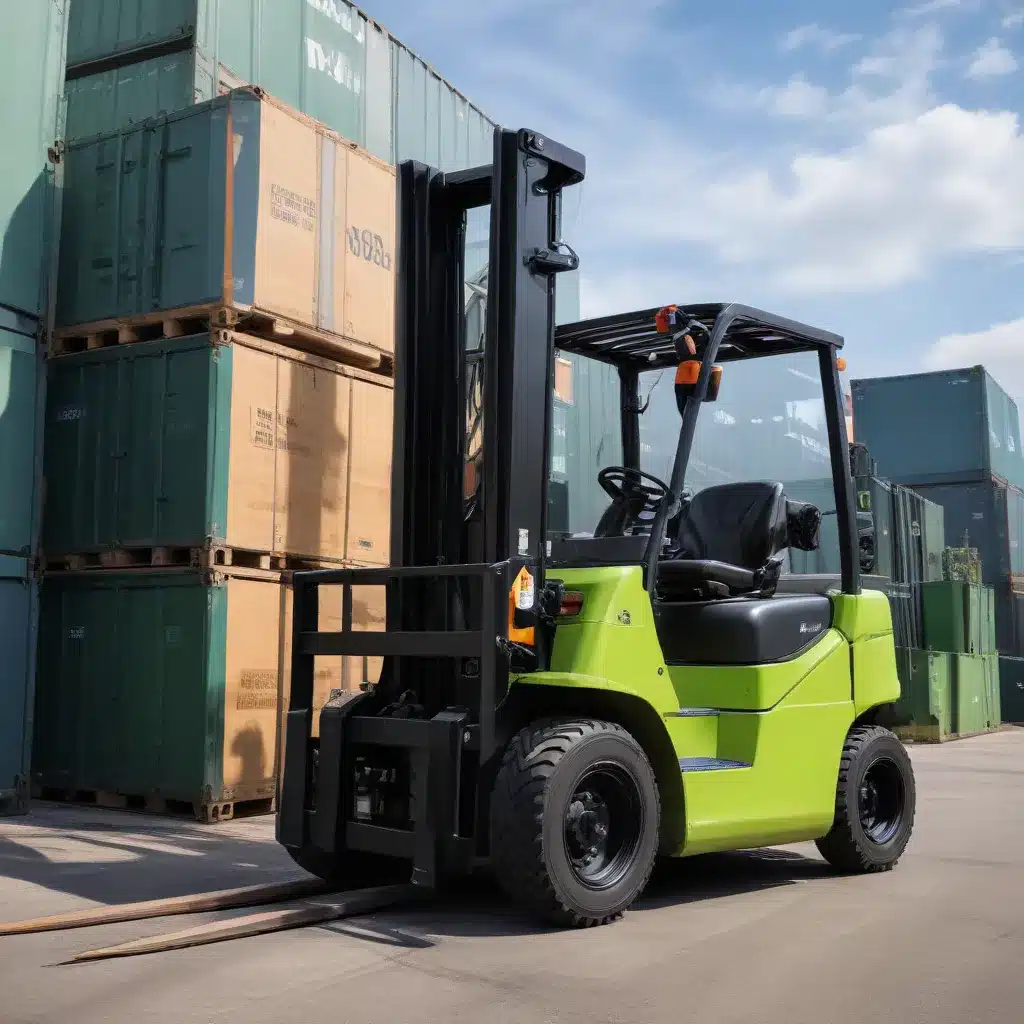
Embracing the Shift Towards Sustainable Logistics
As global organizations chart a path to net zero, the logistics sector is emerging as a crucial frontier for emissions reduction. Scope 3 emissions, those generated within a company’s supply chain, account for the vast majority of an organization’s carbon footprint. With logistics activities, including freight transportation and warehousing, contributing at least 7% of global greenhouse gas (GHG) emissions, any successful journey to net zero must address this challenge.
The demand for greener logistics is on the rise, driven by stakeholder expectations and changing consumer preferences. McKinsey’s research indicates that the market for sustainable logistics could reach an estimated $350 billion by 2030, comprising around 15% of total global logistics spend. However, despite this promising outlook, progress has been limited, with nearly half of companies surveyed having no decarbonization goals in place.
“As customer demands change, regulatory pressures ramp up and stakeholder expectations increase, businesses that fail to decarbonize may risk falling behind while others pull further ahead in their efforts to ‘go green.’”
Navigating the Challenges of Forklift Fleet Electrification
One critical component of the logistics decarbonization puzzle is the electrification of forklift fleets. Forklifts, a staple in warehouses and distribution centers worldwide, have traditionally relied on fossil fuel-powered engines, contributing to the industry’s overall carbon footprint. However, with advancements in electric forklift technology and growing regulatory pressure, the transition to a greener, more sustainable logistics future is underway.
Overcoming Structural and Perceived Obstacles
Forklift fleet electrification, like other decarbonization efforts, faces several structural and perceived obstacles that must be addressed:
-
First-mover Hesitancy: While shippers are willing to pay for low-carbon shipping, the limited availability of high-quality, widely accessible low-emission forklift solutions creates uncertainty. Carriers are hesitant to commit financial resources to underwrite electric fleets without operational viability guarantees or supporting infrastructure.
-
Uncertain New Technologies: Emerging decarbonization technologies, such as lithium-ion batteries and hydrogen fuel cells, present challenges beyond just cost, including disposal of residual assets, strains on original equipment manufacturer (OEM) capacity, and uncertainty around the total cost of ownership (TCO).
-
Sector and Company-specific Considerations: Individual logistics use cases can complicate planning and follow-through on net-zero goals. For example, the unique constraints faced by utility companies, such as hurricane preparedness requirements, can hinder the immediate adoption of electric forklift fleets.
Unlocking the Path to Forklift Electrification
Despite these challenges, viable routes to forklift fleet electrification are opening up as technology solutions become more widespread and affordable. McKinsey’s analysis indicates that a 40-50% reduction in logistics emissions by 2030 is achievable using technology available today.
Laying the Foundation for Forklift Fleet Electrification
To embark on the journey towards a greener, more sustainable logistics future, organizations must take a structured, strategic approach to forklift fleet electrification. Here are the key steps:
1. Robust Emissions Baselining and Target-setting
Establishing a comprehensive baseline of emissions data and setting ambitious yet achievable decarbonization targets is the foundation of any effective electrification effort. This enables companies to measure progress, design tailored solutions, and communicate their sustainability journey to stakeholders.
“Emissions baselining involves analyzing data on activity and emission factors based on the GHG Protocol—an international standard for reporting emissions. Optimally, emissions baselining should tie directly to ongoing sensor-based emissions measurement, given that data precision will become necessary as new net-zero norms and regulations are released.”
2. Establishing a Structured Governance Approach
Developing a clear governance structure, complete with a dedicated decarbonization office, is critical to ensuring a consistent focus on electrification initiatives and the agility to overcome challenges. This includes defining decision principles, budgets, and a hierarchy of organizational oversight, as well as establishing granular KPIs and delivery roadmaps.
3. Implementing Actionable Decarbonization Initiatives
Building a detailed set of short- and medium-term decarbonization initiatives is essential to kickstart the electrification process, demonstrate cost-effectiveness, and build momentum for the longer journey. This involves a holistic diagnostic to understand the organization’s supply chain operations, cost drivers, and emissions sources, enabling end-to-end network optimization opportunities.
4. Leveraging Emerging Technologies and Regulations
As the forklift electrification landscape evolves, organizations must stay abreast of new-but-proven technologies, cost curves, and relevant government incentives or regulations. This forward-looking perspective can provide the certainty needed to invest in next-generation forklift solutions, ensuring alignment with the path to net zero.
“Urgent action is needed in planning and implementing EV charging rollout at scale to reach regulatory requirements. For technologies not yet at cost parity, monitoring government action can enable quick pivots when opportunities arise.”
Embracing the Forklift Electrification Transformation
The transition to a greener, more sustainable logistics future is well underway, and forklift fleet electrification is a critical component of this transformation. By taking a strategic, structured approach to emissions baselining, target-setting, governance, and initiative implementation, organizations can navigate the challenges and unlock the benefits of a decarbonized forklift fleet.
As industry leaders continue to pave the way, showcasing the feasibility and potential of forklift electrification, the time is now for businesses to seize the initiative and position themselves for long-term success in the evolving sustainable logistics landscape.
“With looming regulations and rising stakeholder pressure, now is the time to turn net-zero logistics aspirations into action. Companies can think more broadly about their own decarbonization journeys and leverage a broad range of interventions to get to net zero, with a mix of mature and new-but-proven technologies and robust emissions tracking.”
To learn more about how Forklift Reviews can assist your organization in navigating the transition to a greener, more sustainable logistics future, explore our comprehensive resources and expert insights.

